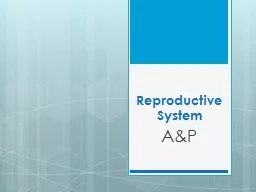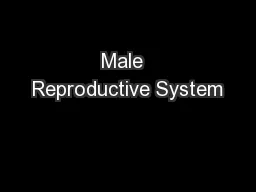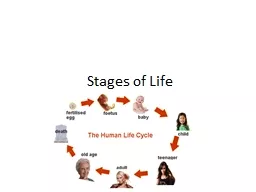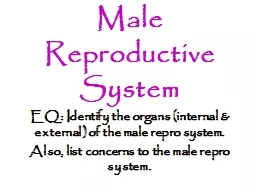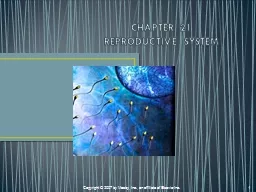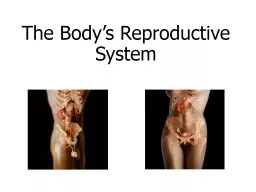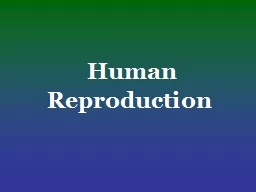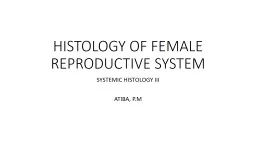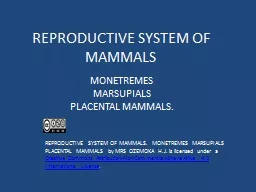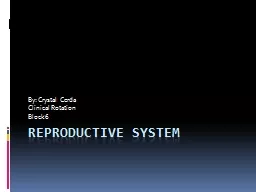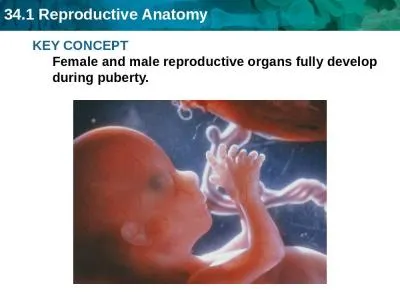PDF-MALE REPRODUCTIVE SYSTEM
Author : lam | Published Date : 2022-09-09
DR RAJARSHI ASH MBBSCAL DOEYE MD PGT2 ND YEAR DEPARTMENT OF PHYSIOLOGY CALCUTTA NATIONAL MEDICAL COLLEGE PARTS OF MALE REPRODUCTIVE SYSTEM A Gonads Two ovoid
Presentation Embed Code
Download Presentation
Download Presentation The PPT/PDF document "MALE REPRODUCTIVE SYSTEM" is the property of its rightful owner. Permission is granted to download and print the materials on this website for personal, non-commercial use only, and to display it on your personal computer provided you do not modify the materials and that you retain all copyright notices contained in the materials. By downloading content from our website, you accept the terms of this agreement.
MALE REPRODUCTIVE SYSTEM: Transcript
DR RAJARSHI ASH MBBSCAL DOEYE MD PGT2 ND YEAR DEPARTMENT OF PHYSIOLOGY CALCUTTA NATIONAL MEDICAL COLLEGE PARTS OF MALE REPRODUCTIVE SYSTEM A Gonads Two ovoid testes prese. SYSTEM. Male Reproductive System. Male Reproductive System . (frontal view). See p. 62 in Review book. Male Reproductive System. Scrotum – sac of skin that holds testes. Hangs below body to keep testes cool. Sperm cannot be produced if body is too warm. Testes move into scrotum just before birth.. Reproductive System. Function=produce new life. Gonads (sex glands), ducts (tubes), and accessory organs can be found in both males and females. Male Reproductive System. Structures:. Testes. Epididymis. CHAPTER 16. Male . Reproductive System Overview. Functions of male reproductive system. Produce, sustain, and transport sperm. Propel sperm during sexual intercourse. Copulation. Produce testosterone. The male body. Prostate gland- . a gland in the male reproductive system that makes fluid that helps carry sperm.. Sperm. - the male sex cell. Testes(testicles)- . the organs the make the sperm and the primary male sex hormone, . PowerPoint® Lecture Slides prepared by Jason LaPres. Lone Star College - North Harris. Structures of the Reproductive System. Gonads. : organs that produce gametes and hormones. Ducts: receive and transport gametes. EQ: Identify the organs (internal & external) of the male repro system. . Also, list concerns to the male repro system.. External Male Organs. Scrotum. Testes. Penis. Scrotum. Pouch of skin that encloses the testes (protection).. Structure and Function. Function of the reproductive system is to produce offspring or perpetuate life. A person is able to reproduce after the onset of puberty; Youngest pregnancy: 5 ½ years old, Oldest: 70 years old. System. Male Reproductive System. External Structures. Penis. : external male sex organ. - Circumcised: removes some or all of foreskin. - Uncircumcised: foreskin not removed. Scrotum. : sac of skin and muscle containing testicles. The function of the reproduction system is to . make new members. of the species.. Individual . can . lead a healthy life without reproducing BUT…. Reproduction is single most important system for . SYSTEMIC HISTOLOGY . II. ATIBA, P.M . OVARY. MESOTHELIAL EPITHELIUM. Simple cuboidal or Columnar. TUNICA ALBUGENIA. Dense connective tissue . Histology of Female Reproductive System. 2. OVARY. CORTEX . MONETREMES. MARSUPIALS. PLACENTAL MAMMALS.. REPRODUCTIVE SYSTEM OF MAMMALS. MONETREMES MARSUPIALS PLACENTAL MAMMALS by MRS OZEMOKA H.J. is licensed under a . Creative Commons Attribution-. NonCommercial. Clinical Rotation. Block 6. Objective . Describe the functions of both male and female.. Note taking . Fill in the blank diagram. Test . Function . The main function for the Reproductive System is the creation of new life. . . Is coordinated by complex neural reflexes. Using sympathetic and parasympathetic divisions of ANS. Male sexual. arousal. Leads to increase in parasympathetic outflow over pelvic nerves, which leads to . . The female reproductive system produces ova.. There are two main functions of the female reproductive system.. produce ova, or egg cells. provide a place where a zygote develops . uterus. cervix. rectum.
Download Document
Here is the link to download the presentation.
"MALE REPRODUCTIVE SYSTEM"The content belongs to its owner. You may download and print it for personal use, without modification, and keep all copyright notices. By downloading, you agree to these terms.
Related Documents


